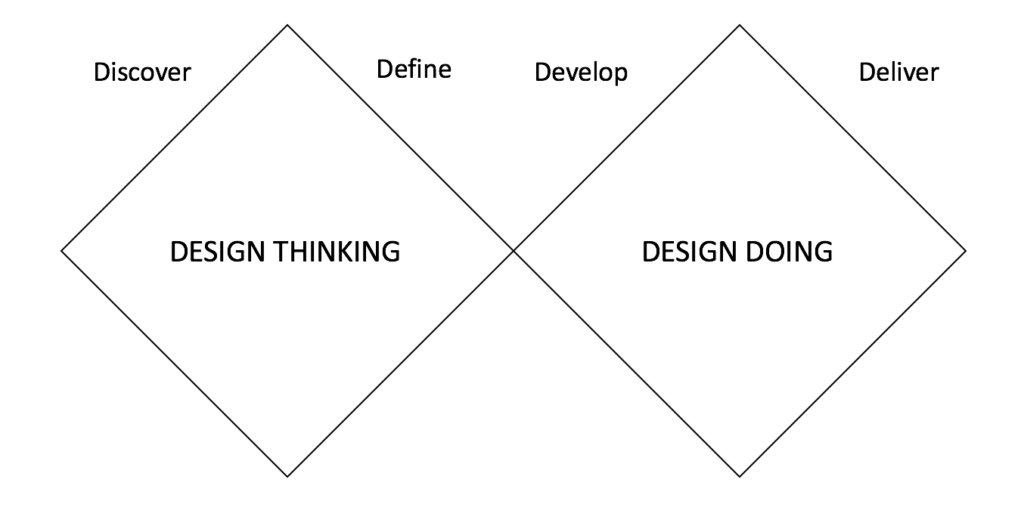Human-Centered Design (HCD), as the name implies, is designing solutions around people. HCD involves the human perspective in all steps of the problem-solving process by observing the problems within context, brainstorming, conceptualizing, developing, and implementing a solution. It is the process that innovators like Apple and IDEO follow.
In this process, you first need to clearly define the problem then define the solution. You discover insights into the problem by “going wide” and diverging into many directions to better understand and define it. You follow many paths – some lead to dead-ends, some stray too far off from your vision and some lead to the same place. Having explored a number of possibilities, you dismiss the paths that are dead-ends or stray too far and focus on the paths that converge around your problem definition. Now you have clarity of what problem you are solving. You diverge again to develop potential solutions and converge again to deliver solutions that work. It is a ‘double diamond’ of divergence, convergence, divergence and convergence.

In general, design thinking is the process of discovering and defining while design making is developing and delivering. But these are broad strokes. There can be plenty of design making – early conceptual prototyping for example – during design thinking and design thinking techniques – like empathy – during design making. The process is fluid and iterative where what you learn from a later stage can send you back to an early stage. To engage in this process requires a high tolerance for uncertainty, ambiguity and faith in the process. Those who have been through it and seen the success that it brings will go on this journey again.